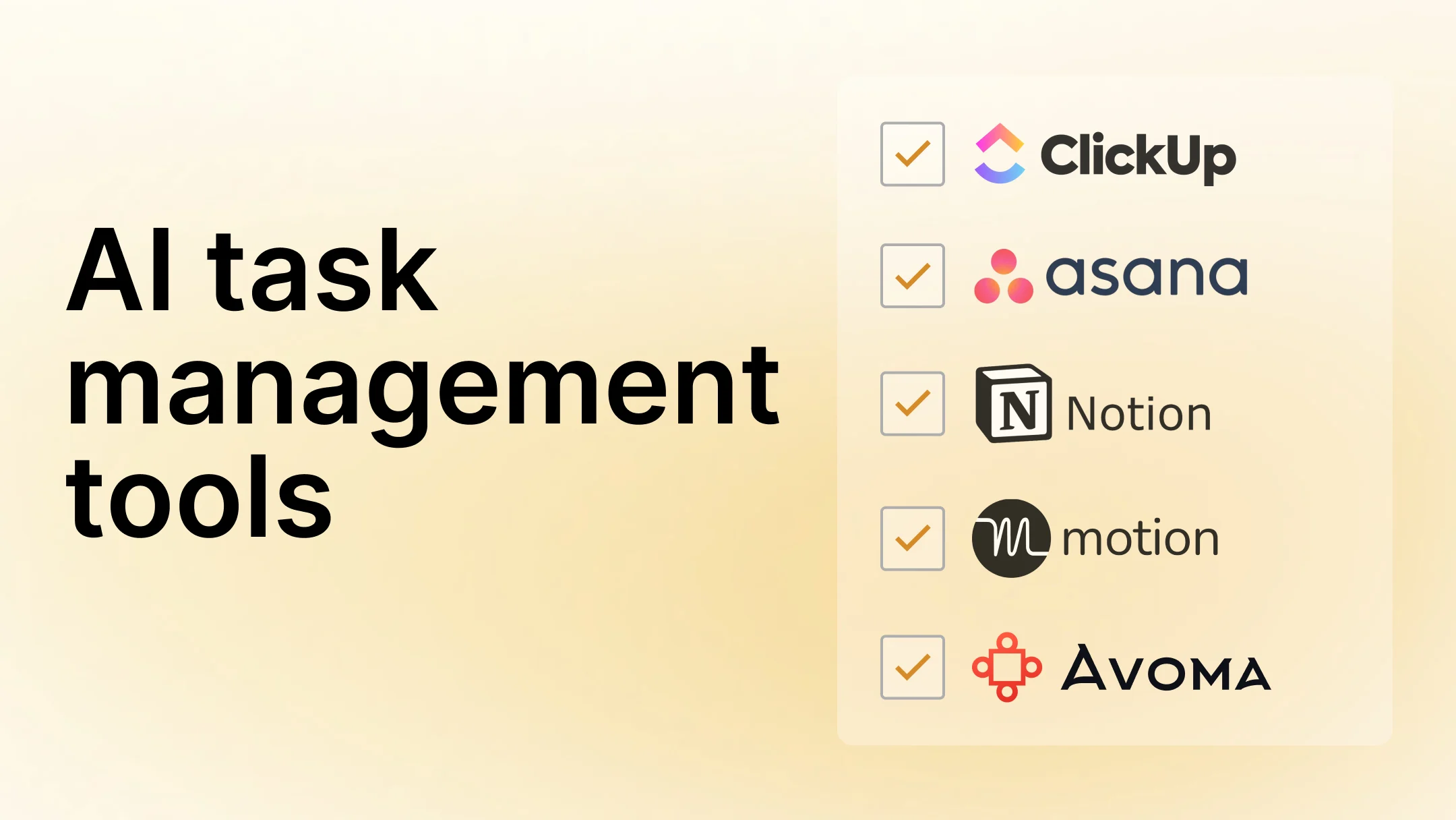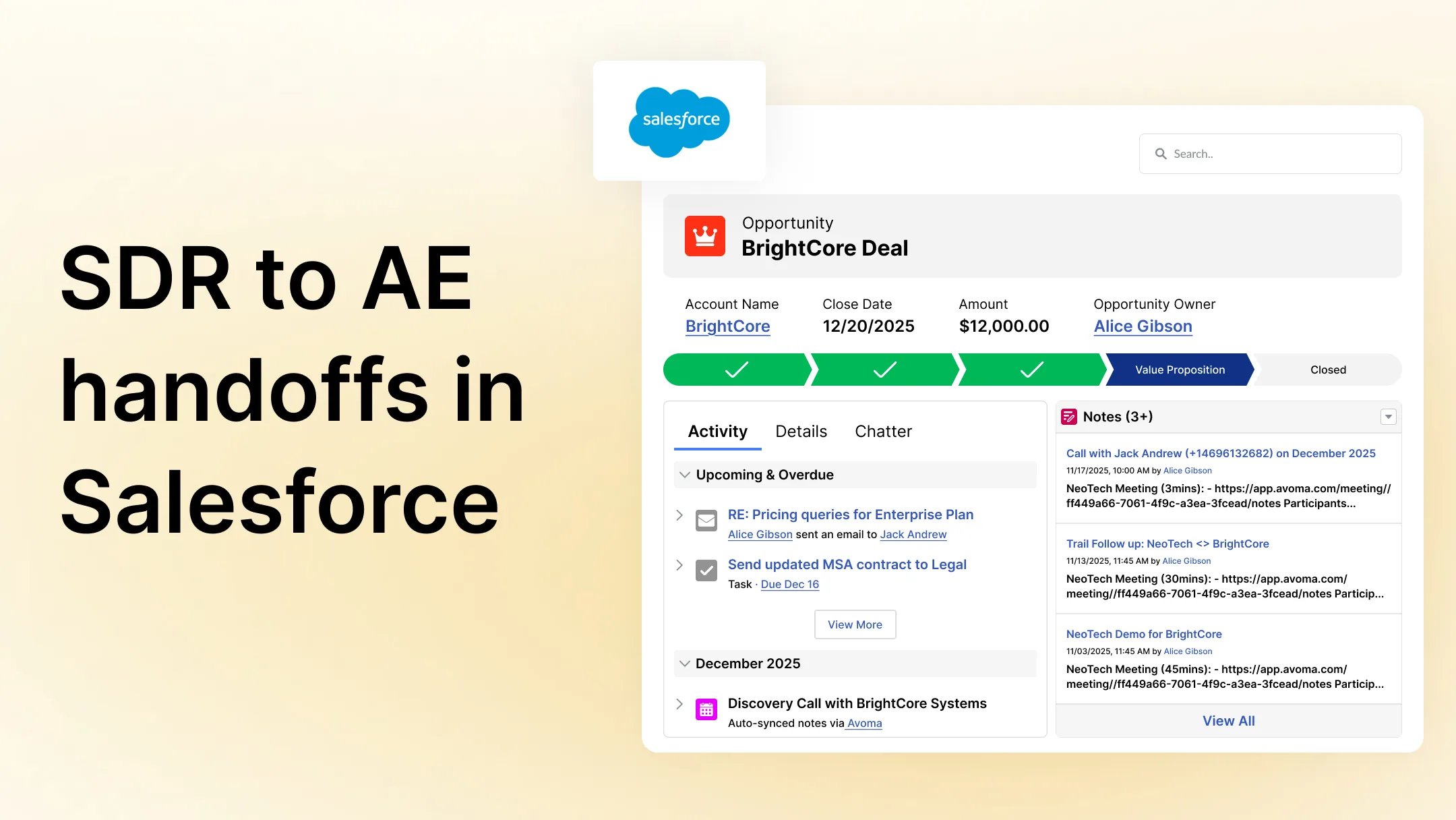How to prepare an effective sales meeting agenda and achieve the desired outcome
Table of Contents:

You have worked hard, spent a lot of time, and in some cases, money to build a relationship with a prospect and finally got them to agree to a meeting. Yet, these meetings don’t always go the way you want and turn into frustrating and time-consuming experiences for both parties.
Sometimes it’s the prospect who is at fault as:
- they don’t have a clear context of what the meeting is about
- they are probably not in the right mood and are distracted during the conversation
- they were really not interested in meeting you but took a meeting because they felt a social or professional obligation
- they don’t want to share or don’t know the relevant business information
- they are not the decision makers or didn’t invite relevant teammates to the meeting
Most of these things you don’t control, but more often than not it isn’t the prospect’s fault, it is yours.
Just do a quick retrospection for the last few weeks and think about how many times you were responsible for a situation like this where:
- you didn’t do sufficient research on the prospect’s personal background, their business, and other key people
- you didn’t have specific outcomes defined for a meeting
- you didn’t plan a proper structure or flow for a meeting
- you didn’t inform the prospect ahead of time what’s the agenda, who should be invited to a meeting, what are the possible next steps, etc.
- you asked some basic questions, but those answers could have been found via public information available on the internet
As a salesperson, you cannot control every aspect of the conversation, but you can at least take ownership of your responsibilities and maximize your chances of achieving a successful outcome from your meetings.
In fact, methodical and planned interactions are not only helpful to achieve the desired outcome for that specific meeting but also very effective for building trust, credibility and accelerating your sales cycles in the long run.
That’s why a well-crafted sales meeting agenda is important to ensure that you are maximizing the return on the time invested.
Here is a step by step guide to just achieve that.
Step 1: Believe in the Importance of Preparing an Agenda for your Sales Meeting
There are many challenges in running a productive and effective meeting. While some of them aren’t under your control, you can certainly steer the sales meetings in the right direction by starting with the right foundation i.e. investing time in meeting planning.

To do this consistently for every meeting, you need to first understand and believe why it is important to plan for your meetings. Because once you believe in its importance, you will find a way to set aside some time for it.
Here are some benefits to establishing a sales meeting agenda ahead of time:
- It ensures that the prospect has a complete context and makes sure they invite key people or decision-makers in the meeting.
- To avoid having non-essential people in the meeting which prevents the conversation from being sidetracked as you don’t want too many cooks in the kitchen!
- It sets a professional tone for the meeting and communicates that it’ll be an efficient use of everybody’s time.
- The prospect has some idea about the objectives of a meeting, so they get some time to think about what questions to ask or next steps to suggest and come prepared for a meeting.
- It ensures the discussion stays on the pre-agreed topics, action items are clearly discussed, every assigned participant gets to participate and provide required input.
Step 2: Commit and Set Aside Some Time for Meeting Planning
Once you believe that it’s important to set an agenda and structure for your meeting, then you need to commit to act on it on a consistent basis. Here are some guidelines to make your meeting planning routine extremely efficient:
- Ideally, if you have some slack time, then plan for tomorrow’s meetings today. It’s difficult to plan when you are bogged down in today’s tasks but you should still make planning for tomorrow’s meetings as a task on its own to get a priority.
- In such situations, keep a buffer of at least 10-15 minutes before each meeting so that you get just enough time to prepare for each meeting.
- Keeping 15 minutes buffer before each meeting will make scheduling logistics harder while booking other meetings, but it’s better to do a few meetings really well, than doing many meetings and not achieving the desired outcome.
Step 3: Define a Routine for Meeting Planning
Define a routine or a checklist for your meeting planning phase. By having a checklist handy, you will significantly reduce time in thinking about what to research for this prospect. You don’t have to be too thorough in your research, but following a specific routine, you will be able to get enough context about the prospect and about their business in a very short period of time.
You can have a routine defined for each stage of the deal or type of meeting call, but these general steps could come handy for all meetings:
- Visit each participant’s LinkedIn profile page, read their Profile summary, browse their previous work experience, notice their tenure and titles at current and previous companies, etc.
- Based on this profile research, visualize this person and start pattern matching it to someone you already know to understand what possible challenges and goals this person would likely to have.
- Visit the company’s website, understand which services and products they are selling, and how they describe their value proposition on their landing page - is it about making more money vs saving cost vs saving time, etc.
- Understanding how they sell their value proposition can be effective because if one of your value propositions can align with one of their value propositions, you can use it to draw parallels during your discussions.
- Visit the company’s LinkedIn page, understand the number of employees, check their “Insight” tab to understand past growth across the company, growth across the function you are selling to, etc.
Step 4: Turbocharge your Productivity with Meeting Agenda Templates
A common challenge for many sales organizations is maintaining consistency and continuity of the sales process, which is developed over time based on the experience of many seasoned professionals.
When you have a formula that works, why reinvent the wheel?
A shared meeting agenda template is a great resource for everyone in your sales team, adding speed and continuity to the process. It helps existing sales reps to streamline meeting preparations while shortening the learning curve for new hires so they can become productive quickly.
Based on the stage of the deal, you can create specific templates like “Discovery”, “Demo”, “Kick-off”, “30-days Check-in”, etc.
But in general, you should include below key components to engage with prospects and “build up” the conversation to take it to the next stage.
Key sales meeting agenda components for better engagement:
- State the agenda and expected outcome: start with explaining the purpose of the meeting, then orchestrate the flow of the meeting to support the desired outcome. Each component of the agenda should build up naturally to the next stage.
- Twist the knife (a little!): throughout the conversation, leverage opportunities naturally to remind the prospects of their challenges, pain points, and frustrations by asking the right questions, presenting the appropriate data, and highlighting the shortcomings of other solutions or their existing status quo system.
- Craft the transitions: make sure the switch from one topic to the next is as natural as possible. An abrupt transition can be awkward and diminish the rapport you have built with the prospects.
- Show that you care: incorporate checkpoints (e.g., during transitions) where you can validate the discussion is headed in the right direction while showing the prospects that you understand and care about their needs and situations.
- Ask the right questions: uncover as much information as you can by asking open-ended questions and guiding the prospects to realize that they need your solution urgently. Listen to how the prospects talk carefully about their challenges and desired outcome so you can incorporate the exact words and phrases in your pitch.
- Transition to the desired outcome with confidence: while asking for the desired outcome or next step is the grand finale, don’t forget to orchestrate a smooth transition into that stage to maintain the trust and rapport you have built during the meeting.

Step 5: Collaborate and Share Your Meeting Agenda
Even if you have a shared template agenda, once in a while, if the account is strategic and high-value account, it is important to avoid following the cookie cutter approach and be more personalized and strategic in your agenda as well.
- Collaborate with your colleagues or managers and share your agenda ahead of time with them to get their input on if there are any topics they think we should discuss based on their experience with similar prospects in the past.
- They can also help identify the blind spots so you can be prepared to address specific objections or questions based on the nature of the prospect.
- And if it’s really a high-value prospect, and if they are available during that time, they might also join you and assist you during the meeting and improve your chances of achieving the desired outcome from a meeting.
Also, a sales meeting agenda shared ahead of time with prospects can help avoid some common mistakes made by salespeople and even help prospects get the most from the conversation.
- Ideally, you should share your agenda with the prospect at least a day before the meeting time. But in case you didn’t get time to send it a day before, then at least sending 15-minutes before would still be effective.
- Also, leverage that opportunity to remind them about the meeting and confirm their availability once again just to avoid “no-shows”. This demonstrates that you’re prepared for the meeting and will considerably reduce “no-show” rates.
- You should also ask them what would they like to add or remove from the agenda. If your prospect responds with a few bullet points with what they want to discuss, then you know you’re in for a good sales meeting.
Final Thoughts
Planning meetings ahead of time take time, effort and consistent discipline. Not every salesperson is well experienced with running these structured meetings and several people may have a bad taste from previous failed meetings. They might even encourage you to just wing it instead of spending time in meeting planning.
But you need to constantly educate them on why the meeting agenda matter, and how it will improve the outcome of their meetings. Or you can simply share this article with them :).
Frequently Asked Questions






What's stopping you from turning every conversation into actionable insights?









